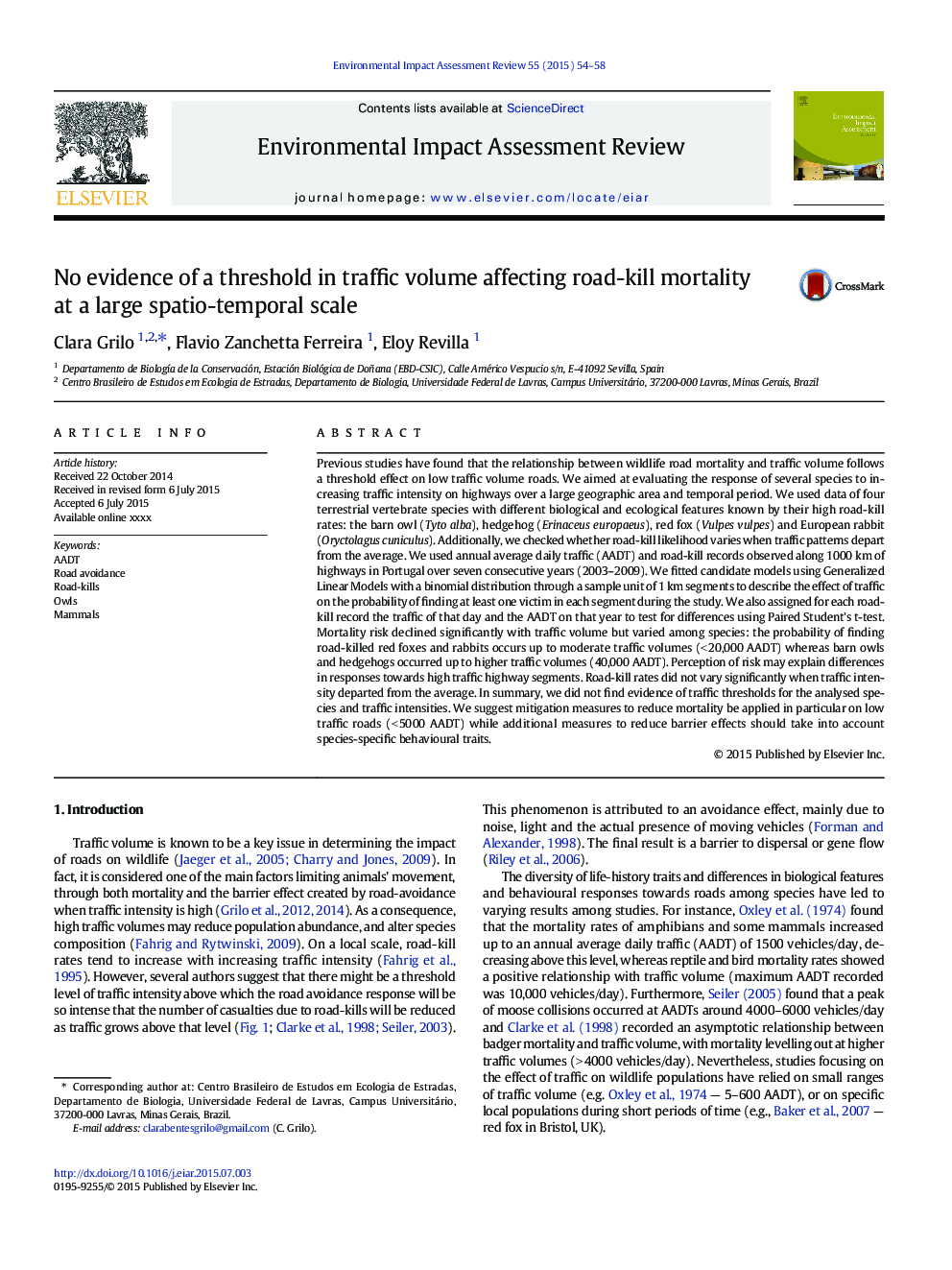| Article ID | Journal | Published Year | Pages | File Type |
|---|---|---|---|---|
| 7465210 | Environmental Impact Assessment Review | 2015 | 5 Pages |
Abstract
Previous studies have found that the relationship between wildlife road mortality and traffic volume follows a threshold effect on low traffic volume roads. We aimed at evaluating the response of several species to increasing traffic intensity on highways over a large geographic area and temporal period. We used data of four terrestrial vertebrate species with different biological and ecological features known by their high road-kill rates: the barn owl (Tyto alba), hedgehog (Erinaceus europaeus), red fox (Vulpes vulpes) and European rabbit (Oryctolagus cuniculus). Additionally, we checked whether road-kill likelihood varies when traffic patterns depart from the average. We used annual average daily traffic (AADT) and road-kill records observed along 1000Â km of highways in Portugal over seven consecutive years (2003-2009). We fitted candidate models using Generalized Linear Models with a binomial distribution through a sample unit of 1Â km segments to describe the effect of traffic on the probability of finding at least one victim in each segment during the study. We also assigned for each road-kill record the traffic of that day and the AADT on that year to test for differences using Paired Student's t-test. Mortality risk declined significantly with traffic volume but varied among species: the probability of finding road-killed red foxes and rabbits occurs up to moderate traffic volumes (<Â 20,000Â AADT) whereas barn owls and hedgehogs occurred up to higher traffic volumes (40,000Â AADT). Perception of risk may explain differences in responses towards high traffic highway segments. Road-kill rates did not vary significantly when traffic intensity departed from the average. In summary, we did not find evidence of traffic thresholds for the analysed species and traffic intensities. We suggest mitigation measures to reduce mortality be applied in particular on low traffic roads (<Â 5000Â AADT) while additional measures to reduce barrier effects should take into account species-specific behavioural traits.
Keywords
Related Topics
Physical Sciences and Engineering
Energy
Renewable Energy, Sustainability and the Environment
Authors
Clara Grilo, Flavio Zanchetta Ferreira, Eloy Revilla,
